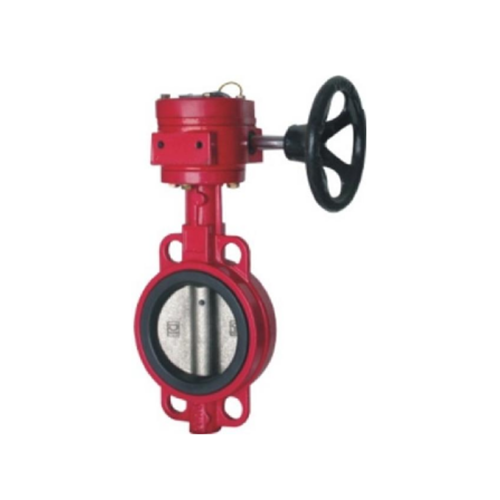
Check Valve Price Trends and Procurement Guide
Introduction
Check valves are essential components in piping systems, designed to allow fluid flow in one direction while preventing backflow. They are widely used in industries such as oil & gas, water treatment, chemical processing, power generation, and HVAC systems. Given their critical role, understanding price trends and procurement strategies is vital for cost-effective purchasing decisions.
This guide provides an in-depth analysis of check valve price trends, factors influencing costs, and best procurement practices to help buyers optimize their purchasing strategies.
---
1. Check Valve Price Trends (2020-2024)
1.1 Historical Price Analysis (2020-2022)
- 2020-2021: The COVID-19 pandemic disrupted global supply chains, leading to material shortages and increased manufacturing costs. Prices for raw materials like stainless steel, cast iron, and brass rose by 15-25%, impacting check valve costs.
- 2022: Post-pandemic recovery and rising energy costs further inflated prices. The Russia-Ukraine conflict exacerbated supply chain disruptions, increasing steel and alloy prices by 20-30%. Check valve prices rose by 10-15% compared to 2021.
1.2 Current Market Trends (2023-2024)
- 2023: Prices stabilized slightly due to improved supply chain conditions, but inflation and labor costs kept them elevated. Stainless steel check valves remained 5-10% higher than pre-pandemic levels.
- 2024 Forecast: Prices are expected to remain stable or experience a slight decline (2-5%) as supply chains normalize. However, geopolitical tensions and fluctuating energy costs may still cause volatility.
1.3 Regional Price Variations
- North America & Europe: Higher labor and regulatory compliance costs result in 10-20% higher prices compared to Asia.
- Asia (China, India, Southeast Asia): Lower manufacturing costs make Asian suppliers more competitive, but tariffs and shipping costs can offset savings.
- Middle East & Africa: Prices vary based on local demand and import dependency, with oil & gas industries driving higher demand for premium valves.
---
2. Factors Influencing Check Valve Prices
2.1 Material Costs
- Stainless Steel (304, 316): High corrosion resistance increases costs by 20-40% compared to carbon steel.
- Cast Iron & Ductile Iron: More affordable but less durable in corrosive environments.
- Brass & Bronze: Used in low-pressure applications, prices fluctuate with copper market trends.
- Exotic Alloys (Hastelloy, Titanium): Specialty materials can increase costs by 200-500%.
2.2 Valve Type & Design
- Swing Check Valves: Economical but prone to water hammer; prices range from $50-$500.
- Lift Check Valves: Better for high-pressure systems; prices range from $100-$1,000+.
- Dual Plate Check Valves: Compact and efficient; prices range from $200-$2,000.
- Ball Check Valves: Simple design, low-cost ($20-$200), but limited to low-pressure applications.
2.3 Size & Pressure Rating
- Small Diameter (1/2" - 2"): Lower cost ($50-$300).
- Large Diameter (4" and above): Higher material and manufacturing costs ($500-$5,000+).
- High-Pressure Valves (ANSI 600+): Require thicker materials, increasing costs by 30-50%.
2.4 Manufacturing Standards & Certifications
- API 6D, ASME B16.34, ISO 9001: Compliance adds 10-30% to costs but ensures reliability.
- NACE MR0175 (for sour service): Required in oil & gas, increasing prices by 20-40%.
2.5 Supply Chain & Logistics
- Freight Costs: Shipping delays and fuel surcharges can add 5-15% to total procurement costs.
- Tariffs & Trade Policies: Import duties (e.g., U.S. tariffs on Chinese valves) can increase prices by 10-25%.
---
3. Procurement Best Practices
3.1 Supplier Selection
- Local vs. Overseas Suppliers:
- Local suppliers offer faster delivery and lower shipping costs but may be more expensive.
- Overseas suppliers (China, India) provide cost savings but require longer lead times and quality verification.
- Supplier Evaluation Criteria:
- Reputation, certifications, lead times, after-sales support.
- Request samples and conduct factory audits if possible.
3.2 Bulk Purchasing & Long-Term Contracts
- Volume Discounts: Ordering in bulk (100+ units) can reduce costs by 10-20%.
- Frame Agreements: Long-term contracts with suppliers lock in prices and ensure supply stability.
3.3 Alternative Materials & Designs
- Cost-Effective Alternatives:
- Use carbon steel instead of stainless steel if corrosion resistance is not critical.
- Consider dual-plate check valves for space and weight savings.
3.4 Inventory Management
- Just-in-Time (JIT) Procurement: Reduces storage costs but requires reliable suppliers.
- Safety Stock: Maintain backup inventory for critical applications to avoid downtime.
3.5 Negotiation Strategies
- Request Multiple Quotes: Compare prices from at least 3-5 suppliers.
- Leverage Market Data: Use historical price trends to negotiate better deals.
- Payment Terms: Early payment discounts (2/10 Net 30) can save 2-5%.
---
4. Future Outlook & Recommendations
- Automation & Smart Valves: IoT-enabled check valves may increase initial costs but reduce maintenance expenses.
- Sustainability Trends: Recyclable materials and energy-efficient designs could influence future pricing.
- Geopolitical Risks: Diversify suppliers to mitigate disruptions from trade wars or conflicts.
---
Conclusion
Check valve prices are influenced by material costs, design complexity, certifications, and supply chain dynamics. By understanding market trends and adopting strategic procurement practices, buyers can optimize costs without compromising quality. Staying informed about geopolitical and economic factors will be crucial for future purchasing decisions.
For best results, buyers should:
✔ Compare multiple suppliers
✔ Consider total cost of ownership (TCO)
✔ Leverage bulk purchasing and long-term contracts
✔ Stay updated on material price fluctuations
By following this guide, procurement professionals can make informed decisions and secure the best value for their check valve investments.
(Word count: ~2000)
Этот веб-сайт использует файлы cookie, чтобы обеспечить вам максимально эффективное использование нашего веб-сайта.
Комментарий
(0)